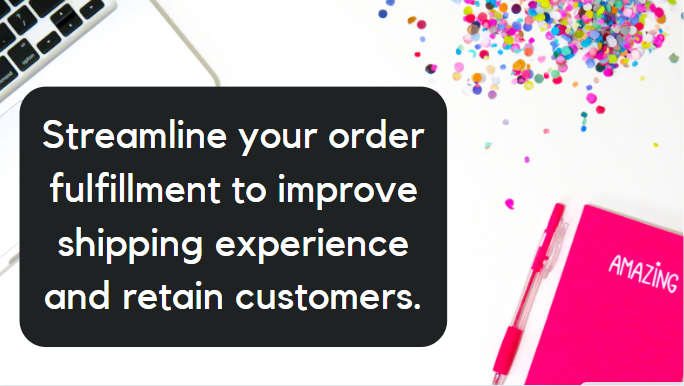

Last updated on
February 5, 2024
In just a little over 20 years, online shopping has evolved from a unique idea to a nearly indispensable industry. Now, more than ever, online shopping has become embedded in our new normal, with e-commerce sales expected to top $4 trillion by the end of 2020.
With a growing market of online buyers, the time is ripe to start an online business. Here are five things you need to nail down if you’re looking to start an online store.
Your products are the lifeblood of your business, and knowing where to get them can spell the difference between failure and success. You’ll need to offer the best quality products for the most affordable price if you want to build your profits and your brand.
There are many ways to source your products, all with their own pros and cons. The most common methods are to create them yourselves, get them via dropshipping, from manufacturers, or to buy wholesale.
Creating your products lets you control your branding, pricing, and quality. But it can be harder to scale, especially if you’re the only one making your products as you’ll have less time (and possibly energy) to meet large orders and develop other parts of your business.
If you choose dropshipping, you’re not selling items you actually own or made. Customers order from your website, and you forward those orders to your suppliers, who then ship the product to your clients. While dropshipping is cheap and convenient (you don’t have to keep any inventory yourself), you’re bound to face a lot of competition.

Manufacturing is ideal if you have a guaranteed market for your idea and want someone to produce the goods for you. The downside, though, is that it can get a bit pricey (ranging in thousands of dollars) to fulfill your initial orders.,
Getting items wholesale is a great way to save money and time, allowing you to cut down on transport costs and get more bang for your buck. However, some suppliers enforce price controls that prevent or limit you from offering discounts, which could hurt your bottom line.
Study each model’s advantages and downsides to choose the most suitable one for your business.
Order fulfillment involves getting your customers’ orders, processing and shipping the order, updating your inventory, and handling any returns. The process ends when buyers receive and are satisfied with the delivery.
Because it’s such a key part of your customers’ satisfaction, setting up a smooth eCommerce fulfillment system is crucial to retaining them and growing sales. More than half of shoppers evaluate online orders based on the speed of shipping, and nearly 40% of buyers say they stop shopping with a retailer if they experienced lousy deliveries.

Streamline you order fulfillment with these tips:
These platforms enable end-to-end order visibility, so you, your supplier, and customers are always on the same page when it comes to order details like availability and quantities.
Consider using warehouse management systems software to help you control and optimize your inventory management, accuracy, and tracking, and other aspects of your warehouse workflow.
There are an estimated 2 billion websites on the internet and by the time you read this sentence, hundreds more will probably have popped up. This is why your domain name, or your web address, is so important in making sure that your customers can find you.
To help shoppers remember your web address, pick an SEO-friendly domain name that is unique and represents your business. Look up keywords and frequently typed questions online to find out what your potential clients are researching. If you’re targeting customers in your area, do local keyword research and specify your location (while you’re there, you can even bookmark the page or note your observations for your future local SEO marketing campaigns).
Be sure to pick domain names that aren’t trademarked so you won’t get into legal trouble. Registering your domain name ASAP also prevents other businesses from taking your preferred name.
However, getting your first-choice domain could be for naught if your website is down. That’s why you need a reliable hosting provider to make sure you have a consistent and strong web presence Services come in packages varying in ease of access, support, features, pricing, etc.

Consider these things when selecting your hosting provider:
One hosting provider you can tap is Siteground, which primarily caters to small businesses that want top-notch yet affordable hosting and customer service plans.
With your domain name and hosting needs taken care of, you can start building out your website.
Websites act the same way a physical retail store would. For example, your online shop has a storefront through your homepage, a products display section (or pages, in this case), a payment processing area through your checkout, and others. Once inside your store, you’ll want to make it as easy as possible for your visitors to learn more about you and find and buy what they want.
As you build your online store or website, keep these things in mind:

Aside from being an essential marketing tool, your website also establishes your credibility as a business. Whether you’re a business coach offering your services to clients, or selling cupcakes, lock tagouts, books, or clothes, investing in your website is a must.
A catchy domain name and an engaging website aren't enough to bring in new clients. You'll need to get your name out there. This is where email marketing comes in. Email marketing is one of the best ways to help you grow your sales and conversions. Every dollar spent can get you an ROI of $42 on average.
Establish email marketing as your startup’s primary promotional tactic. Use it to announce your upcoming sales, introduce new products, invite shoppers to refer your store to their friends, entice them to complete their purchases, and more.

To develop your email campaigns:
Build your email campaigns with tools such as Sendinblue, which lets you automate your workflows, personalize your messages, A/B test subject lines, and more.
Sendinblue is also user-intuitive, with drag-and-drop capabilities to help you customize your newsletter templates smoothly, among many other features.
Keep in mind, though, that running email marketing campaigns takes much work. If doing it yourself starts consuming too much time and focus, you can get a marketing technologist (and build your marketing team from there once you’ve grown your store).
With the right small business email marketing tricks and tools, you can launch your online store, foster regular customers, and grow your sales fast.
Starting your online store is an exciting but challenging venture. If you’re serious about growing your store profitably, building these five pillars of online selling will help set the foundation for e-commerce success.
Aqsa Mughees works as a Content Lead at Mailmunch with 5+ years of experience in creative content strategy. With a grip in digital content creation for the tech industry and an undying love for writing, she is crazy about helping businesses grow through content marketing.
Tags:

Hamna Abid
July 11, 2023

Hamna Abid
June 23, 2023

Ammar Mazhar
May 30, 2023